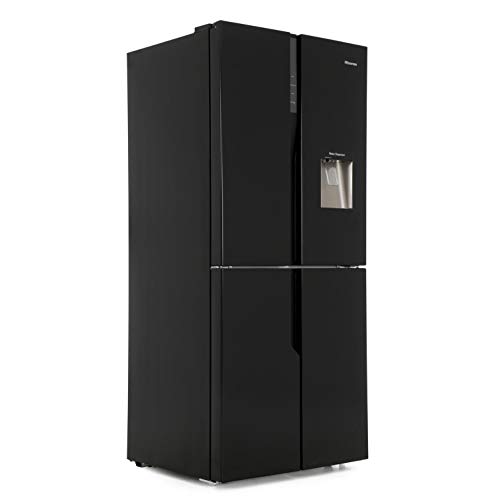
Fridge Deals Uk
FollowOverview
-
Founded Date April 30, 1929
-
Sectors Education
-
Posted Jobs 0
-
Viewed 15
Company Description
The Best Fridges And Freezers Tricks For Changing Your Life
Understanding Fridges and Freezers: The Essential Kitchen Appliances
Refrigerators and freezers are 2 of the most vital home appliances in contemporary kitchens. These devices serve a vital role in food preservation and waste reduction by guaranteeing that perishable products remain fresh and safe for intake. This short article dives into the various kinds of fridges and freezers, their performances, and crucial factors to consider for choice and upkeep.
Kinds of Refrigerators
The marketplace uses a variety of refrigerator types, each created to meet various customer requirements. Below is a list of the most common kinds of fridges:
-
Top-Freezer Refrigerators
- Most common type.
- Freezer compartment lies above the refrigerator area.
- Usually more economical and energy-efficient.
-
Bottom-Freezer Refrigerators
- Freezer is situated at the bottom.
- Permits much easier access to fresh products at eye level.
- Typically includes pull-out drawers for much better company.
-
Side-by-Side Refrigerators
- Refrigerator and freezer areas are nearby.
- Perfect for narrow cooking areas and allows easy access to both compartments.
- Often includes water and ice dispensers.
-
French Door Refrigerators
- Integrates a bottom freezer with double doors at the top.
- Offers sufficient storage and stylish styles.
- Often includes features like temperature-controlled drawers.
-
Compact Refrigerators
- Smaller sized size perfect for minimal areas.
- Typically used in dorm spaces, studio apartments, or as secondary fridges.
Table 1: Comparison of Refrigerator Types
| Type | Benefits | Drawbacks | Typical Size |
|---|---|---|---|
| Top-Freezer | Affordable, energy-efficient | Less convenient access to the freezer | 14-30 cu. ft. |
| Bottom-Freezer | Much easier access to fresh food | Freezer can be more difficult to organize | 19-30 cu. ft. |
| Side-by-Side | Easy access, water/ice dispenser | Narrow vs. storage space | 22-30 cu. ft. |
| French Door | Elegant, large, arranged | More pricey | 20-30+ cu. ft. |
| Compact | Space-saving, portable | Minimal storage | 1.7-5.5 cu. ft. |
Types of Freezers
Freezers are an equally crucial appliance for food preservation. They can be found in various designs developed to fit different family needs. Consider the list below types:
-
Upright Freezers
- Run like a basic refrigerator with vertical storage.
- Easier to arrange with racks and compartments.
-
Chest Freezers
- Large, horizontal style normally offering more storage area.
- Maintains temperatures much better throughout power blackouts.
- More energy-efficient than upright designs.
-
Portable Freezers
- Compact units ideal for outside activities or small areas.
- Typically used for camping trips or as short-term storage.
Table 2: Comparison of Freezer Types
| Type | Benefits | Downsides | Typical Size |
|---|---|---|---|
| Upright Freezer | Much easier to arrange | Less energy-efficient, more floor space | 5-20 cu. ft. |
| Chest Freezer | Holds more products, energy-efficient | Harder to arrange | 5-25 cu. ft. |
| Portable Freezer | Compact and flexible | Minimal storage capability | 1-10 cu. ft. |
Key Features to Consider
When selecting a fridge or freezer, consumers ought to remember a number of features that can boost performance:
- Energy Efficiency: Look for designs with the ENERGY STAR certification to conserve on electrical energy expenses.
- Storage Capacity: Evaluate storage needs based upon household size and consuming practices.
- Temperature Control: Some devices provide digital controls for exact temperature settings.
- Adjustable Shelving: Customizable shelving enables for optimum company.
- Water and Ice Dispenser: Offers convenience however can take up important space inside.
- Sound Level: Sound rankings can affect comfort, particularly in open-concept homes.
Advantages and disadvantages of Having a Fridge and Freezer
While fridges and freezers are indispensable innovations, they also have particular benefits and drawbacks:
| Pros | Cons |
|---|---|
| Protect food life expectancy and reduce waste | Require regular maintenance |
| Allow bulk purchasing and meal prepping | Can be pricey to purchase and run |
| Offer convenience and quick access to food | Occupy significant kitchen area area |
Upkeep Tips
To guarantee longevity and ideal efficiency of fridges and freezers, think about the following upkeep tips:
- Regular Cleaning: Clean the interior and exterior periodically to prevent buildup of dirt and germs.
- Check Seals: Inspect door seals regularly for leaks to preserve efficiency.
- Temperature Settings: Keep the fridge at 34-38 ° F and the freezer at 0 ° F for optimal food preservation.
- Thaw as Needed: Chest freezers need to be thawed frequently to preserve effectiveness.
- Clear Air Vents: Ensure that air flow isn’t obstructed to enhance energy efficiency.
FAQs About Fridges and Freezers
Q1: How long can food be saved in a freezer?A: Most foods can be kept in a freezer for numerous months. Meats and poultry frequently last 4-12 months, while veggies can last up to 8-12 months.

Q2: How typically must I clean my fridge and freezer?A: It is suggested to clean your fridge and freezer every 3 to 6 months, or as required when spills occur. Q3: Can I put hot food directly in the fridge?A: It is suggested to cool hot food to space temperature level before placing it in the fridge to avoid
raising the temperature inside the home appliance. Q4: Why is my fridge running constantly?A: This could be due to a malfunctioning thermostat, stopped up coils, or door seals that aren’t working appropriately. Fridges and freezers are important
assets to modern-day families, supplying essential services for food storage and conservation.
Understanding the various types, features, and upkeep requirements can assist consumers choose the Best fridges appliances for their needs and maximize their performance. Accepting energy-efficient models not only supports sustainable practices however likewise contributes to substantial savings on energy bills, making notified choices more important than ever.
